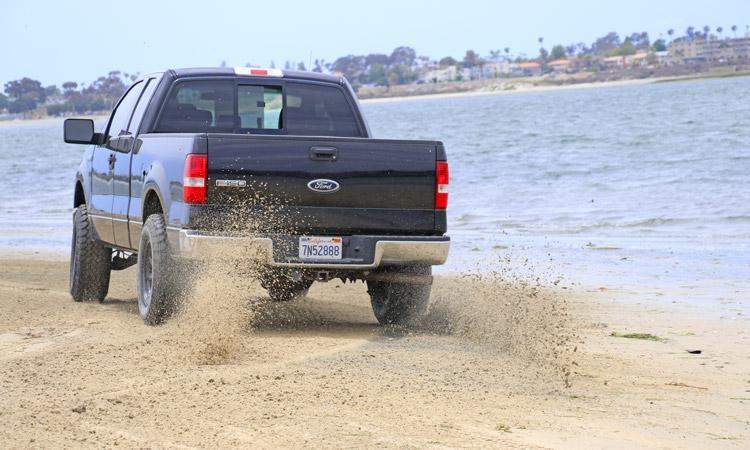It might be obvious – big knobby tires are better at gripping rugged surfaces than smooth ones. After all, you wouldn't put a pair of racing slicks on your truck and take it out on the trail, would you? The reality though is that for most of us, the right choice of tires is more about balance than absolutes. That's why I really like this set of Grabber A/T X that General Tire sent me to check out.
With a few exceptions, virtually every truck I get to review biases the tires towards on-road performance. Brands like Chevrolet, Toyota, and Nissan are chasing that incremental mile per gallon so that they can boast that they are better than the other guys. I honestly don't fault them. That's the right choice if the majority of your driving is going to be on-road.
But what if you need a bit more off-road capability?
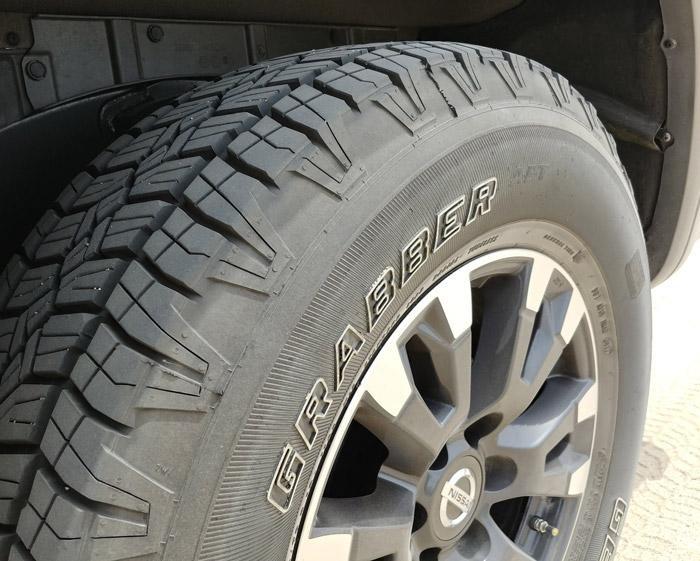
There are some great solutions for that including the Grabber APT that I tested earlier this year on the Nissan Titan. It will do well in most off-road environments, but the tread pattern is designed to be as efficient as possible for street driving.
Likewise, it is designed for a quiet ride. In fact, you'll notice that the grooves in the tread are close together and angled away from the center channels to help dissipate road noise. When driving on the road, this is a good thing … after all, you want a stable tire that is as quiet as possible while still being able to take on challenges like water, snow, and maybe some mud on the road.
When off-road performance is your main concern, your priorities are different.
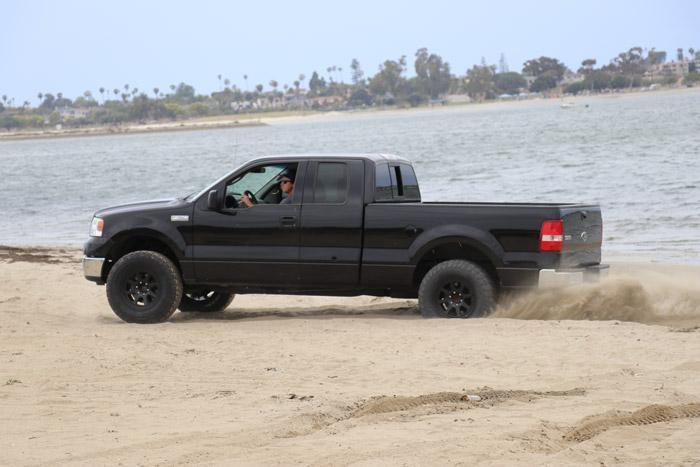
What Makes a Good Off-Road Tire?
Unlike driving on pavement and the controlled surface of a typical highway setting, driving on a trail or open land brings with it some key challenges. First, the terrain is going to be unpredictable and you'll find a variety of loose dirt / sand / rocks as well as variety of other debris. Second, not only is the concern traction for going up and down hills or cornering – but also resistance to being punctured by sharp objects. This is especially true for needing to resist sidewall damage.
Depending on your use case, you may want to invest in a specialty tire. For instance, one designed specifically for mud or one that is designed specifically for rock crawling. However, most of you reading this are in a position where you need to find how to pick the right tire for maximum performance on the trail … but still be able to perform well on the streets. It's essentially the opposite of what the auto manufacturers pick for most off-road trucks.
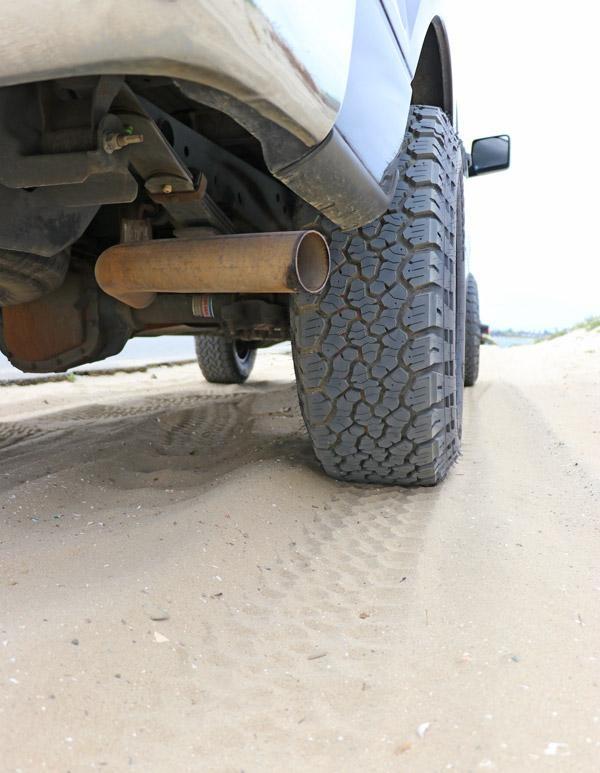
Looking at The Off Road Tire's Tread Pattern …
Just from a quick visual examination of the Grabber A/T X vs it's cousin the Grabber APT, you'll notice some key differences. For instance, the grooves are deeper, the tread pattern design features multiple angles to grip uneven surfaces, and the shoulder scoops alternate with sidewall protection lugs to add additional grip as well as protect from punctures.
However, unlike tires designed primarily for off-road use, the grooves in the crown are still relatively close together. General Tire also includes extra padding layers beneath the tread to help reduce noise and vibration for on-road comfort.
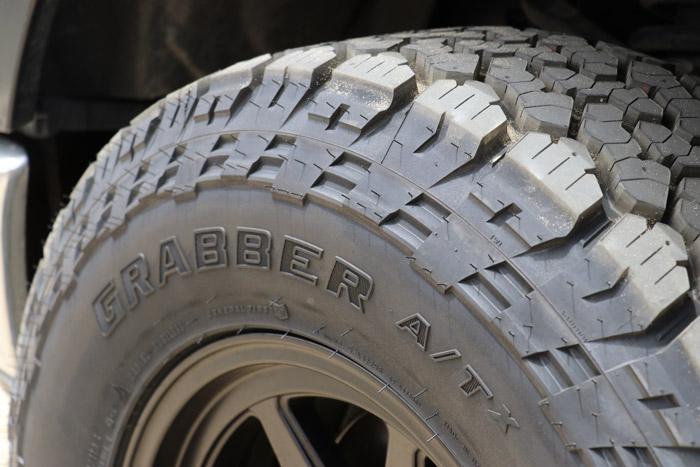
Sidewall Protection Is Key For Rocky Terrain
As mentioned previously, you'll want to select a pair of tires that help protect themselves from being punctured and the sidewall tends to be the weakest point. This is one of the most frustrating things for me since I've had the pleasure of testing many amazing trucks … but tires always seem to be the weak point.
For instance, on our trip exploring gold mines near Joshua Tree last year – my 4Runner TRD Pro had a sidewall puncture leading to sudden decompression and temporary loss of stability on a steep trail.
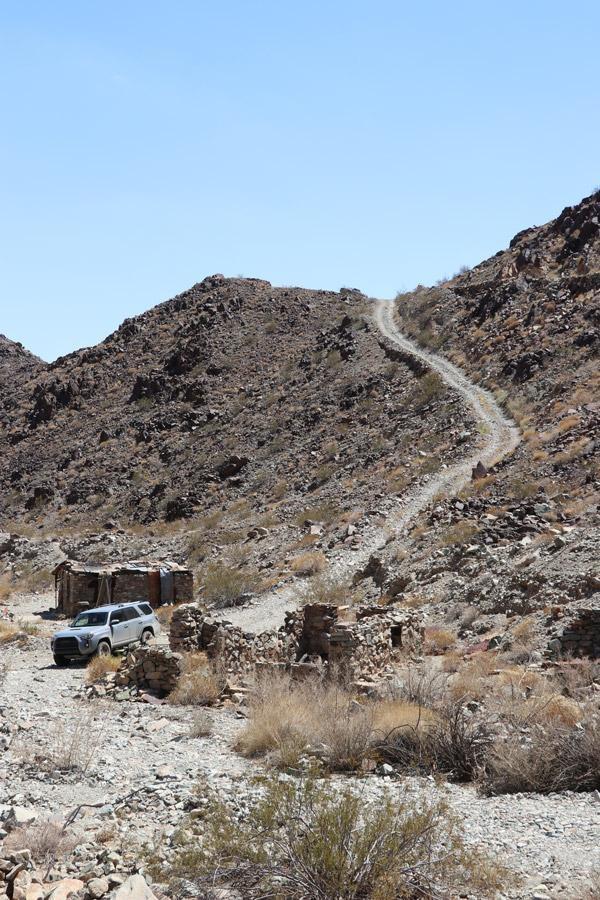
You don't want that to happen to you!
To help reduce the likelihood of that happening to you, Grabber A/T X uses a combination of the sidewall protection lugs as well as a series of deflection ribs to help deflect objects away.
Build Quality of the Rubber …
Honestly, this is where the rubber meets the road! I apologize for the pun, but it's really true. There are a lot of knock-offs out there right now and it's easy for one manufacturer to copy the tread patterns of another. In fact, when looking at this Grabber A/T X and comparing it to the tires on another friend's truck – the similarity is shocking.
Ultimately though, you get what you pay for and while you can feel some differences (stiffer more "plastic" feel on the cheaper tires) it can be deeper than that.
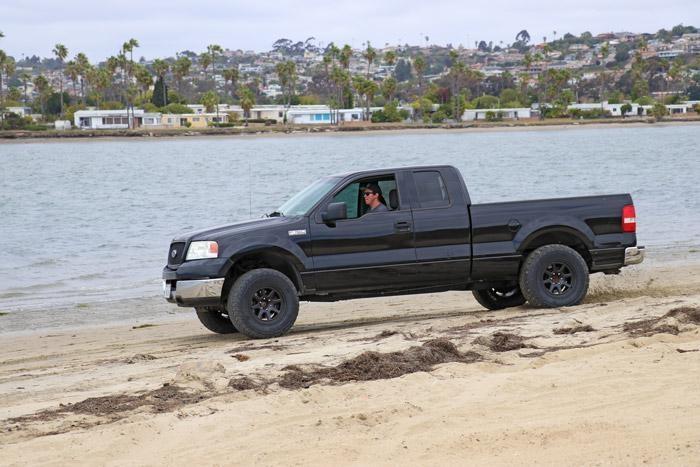
After having tested the Grabber A/T X out both on and off-road, I'm pretty happy. The truck we added them to is undergoing a conversion from being an "everyday driver" F-150 that frankly looked unremarkable to one that is now lifted and updated to perform well for off-road driving.
Previously, with "street tires", we wouldn't have dared to take the truck into deep sand. After the tires were added though, we had no problems cornering as well as transferring from hard surfaces to deep sand to wet muddy sand.
Visually, these new tires make the truck look a lot more aggressive while not significantly impacting the on-road performance in terms of noise and comfort.
I'm looking forward to sharing more in the future as we go and explore more trails and we'll see how these hold up compared to the OEM tires that come with most trucks.
My money says that these are going to survive a lot more obstacles than those will!
